- Home
- Michael Chabon
Pops: Fatherhood in Pieces Page 2
Pops: Fatherhood in Pieces Read online
Page 2
It takes a profound love of clothes, and some fairly decent luck, to stumble on somebody who wants to converse about cutting-edge men’s fashion at a Rush concert, and yet a year before his trip to Paris, in the aftermath of the Canadian band’s last show at Madison Square Garden, Abe had managed to stumble on John Varvatos. Abe had spent that day leading his bemused minder on a pilgrimage through SoHo, from Supreme to Bape to Saint Laurent to Y-3, and now, ears still ringing from the final encore (“Working Man”), Abe reported in detail to Varvatos, with annotations and commentary, on all the looks he had seen downtown. When he was through, Varvatos had turned to Abe’s minder—a major Rush fan who was, of course, also Abe’s father—and said, “Where’d you get this kid?”
“I really have no idea,” I said.
Abe had shown up late to his family, too, the fourth of four, graced with a sister on either side of the elder brother. By the time a fourth child comes along, the siblings have usually managed among them to stake out a wide swath of traits, talents, crotchets, flaws, phobias, and strengths. Finding one’s difference can often be a fourth child’s particular burden and challenge.
For Abe it never seemed to be a challenge at all, and if it was a burden, it was also a gift: From the moment he became himself, what made Abe different—from his siblings, from classmates, from most of the children who have ever lived—was the degree of comfort he felt with being different. Everybody wants to stand out from the crowd, but so few of us have the knack, and fewer still the stomach for bearing up under the crush of conformity. It was always Abe’s rare gift not just to stand out and bear up but to do those things with panache. And the way in which he expressed his difference most reliably, and with the greatest panache, was through dressing up.
When he was very little—as for so many little boys—“dressing up” meant “superhero.” At three he was firmly of the opinion that a bright-yellow-and-sky-blue Wolverine costume, or a lop-eared bat cowl, was appropriate attire for any occasion. Later there was an intense dalliance with a splendid old-school singing-cowboy-type western getup—black hat, red shirt embroidered in white, black vest and chaps with chrome conchos, black boots. When he started kindergarten, however, he found that the wearing of costumes to school was not merely discouraged, or permitted only on special days, as in preschool: It was forbidden. It would also, undoubtedly, have incurred an intolerable amount of mockery. Abe’s response was to devise, instinctively and privately, what amounted to a kind of secret costume that would fall just within the bounds of “ordinary attire” and school policy. Over the next few years, with increasing frequency, he went to school dressed up as a man—a stylish man.
He had only vague, somewhat cartoonish notions about what constituted adult-male style, centered around certain key articles of clothing, chief among them fedoras, cardigans, button-front shirts, suspenders, and bow ties. He had a little tweed blazer that was a source of deep power for him, as deep as the power of the armor to Marvel’s Iron Man. It had a crest embroidered on a patch over the breast pocket, and it made him very happy. By third grade, he was wearing his man costume to school almost every day. There was teasing; one of his two little snap-brims got snatched off his head now and then and tossed around the playground. But the teasing never exceeded Abe’s ability or willingness to withstand it, or the joy that he derived from losing himself in clothes. And his stubborn persistence established a pattern that was thereafter repeated as his taste grew more refined and sophisticated: Little by little, one by one among the other boys in his class, fedoras would crop up, a porkpie here, a trilby there. It was not unusual to spot one of Abe’s former tormentors sporting a cardigan or a clip-on tie.
Some nights I used to stand in the doorway of his bedroom, watching him thoughtfully edit the outfit he planned to wear to school the next day. He would lay out its components, making a kind of flat self-portrait on the bedroom floor—oxford shirt tucked inside of cotton sport coat, extra-slim pants (with the adjustable elastic straps inside the waistband stretched to button at the very last hole), argyle socks, the whole thing topped by the ubiquitous hat—and I would try to understand what the kid got out of dressing up every day like a pint-size Ronald Colman out for a tramp across the countryside of Ruritania. Did he like the attention, even if it was negative? Was he trying, by means of the clothes, to differentiate himself from the other boys, or were the clothes merely the readiest expression, to him, of his having been born different? Was he trying to set himself apart, or could he simply not help it?
Around the time when Abe was making the transition to middle school, my elder son began to take a strong interest in clothes, particularly streetwear, fed by a burgeoning interest (shared by Abe) in hip-hop. A kind of golden age of streetwear was under way, exemplified by brands such as Supreme, Palace, and A Bathing Ape, manifested through “collabs” between major sneaker manufacturers and the edgier, top-tier designers like Rick Owens and Raf Simons, and represented by hip-hop tastemakers like A$AP Rocky and the now disgraced Ian Connor. Abe’s elder brother opened the door to this world—Virgil Abloh’s world—and Abe sauntered right in.
Even as he followed his brother into this trend-driven, icon-imitating world, Abe worked to maintain his standard of idiosyncrasy, of standing out, freely incorporating floral patterns, vintage scarves, and the color pink into the outfits he wore into the heteronormative jaws of seventh grade. Small for his age—barely a men’s size XS—Abe often had trouble finding anything “fire,” in the way of menswear, that would fit him. So he would shop the women’s racks, with a sharply editorial eye; a women’s XS, he could make work. The Maison Margiela shirt he wore at the Off-White preview was women’s wear, and he had chanced upon another favorite shirt, a Tigran Avetisyan, while browsing one of the women’s-clothing rooms at Opening Ceremony in L.A.
The sight of him, hanging around the neighborhood with a friend, looking so at ease in the flowing cream-black-and-gray Avetisyan shirt with its bold bands of red at the collar and cuffs and wild graphic pattern, made me realize that I almost never saw boys his age wearing anything remotely like it, wearing anything but a T-shirt or an athletic jersey, a hoodie or a flannel. The mantle of uniformity lay vast and heavy across the shoulders of adolescent boys (how vast, how heavy, I remembered well). As before—even worse than before—Abe suffered taunts and teasing for his style of dress and his love of style. But he did not back down; he doubled down. He flew the freak flag of his Tigran Avetisyan shirt high. And though I couldn’t fathom the impulse driving my kid to expose himself every day to mockery and verbal abuse at school, I admired him for not surrendering, and in time I came to understand the nature of my job as the father of this sartorial wild child: I didn’t need to fathom Abe or his stylistic impulses; I needed only to let him go where they took him and, for as long as he needed me, to follow along behind.
There was only one flaw, as far as Abe was concerned, in the week he spent going to fashion shows: His poky old minder, making him late. His minder was not having anywhere near as great a time. His minder was hot and bored. Most of all, his minder did not, fundamentally, really give all that much of a fuck about fashion. Clothes, sure. His minder found pleasure in thrift-shopping for vintage western shirts or Hermès neckties, in wearing his favorite Shipley & Halmos suits (gray cashmere, tan corduroy), his Paul Smith shirts and shoulder bag. Less pleasure, perhaps, than he found in books, or records, or cooking, or watching old movies with his wife, but pleasure nonetheless. Clothes were all right with Abe’s minder. But they were nothing to build a religion, a hobby, or even a decent obsession around.
Then, one warm June week in Paris, Abe’s minder attended his first Men’s Fashion Week and discovered that he understood even less. Fashion shows had an unexpected sideshow-freaks-on-parade quality, and when they were not pompous or eccentric, they were just plain goofy. You drove all the way across Paris to get to the venue—a special mapping algorithm seemed to have been employed to ensure that every show was held as far as possible f
rom its predecessor and its successor on the schedule—through the heat of a Paris summer, arrived late yet still waited around outside until your feet hurt, guaranteeing you would be late for the next show, too. Then you sat in a dark, loud, hot, crowded room for another twenty minutes. The lights came on and the music pounded. There would be a wall made out of old car headlights and a sonic wall of EDM, and a bunch of tall, bony, pouting young men with a studied air of opiate addiction would come striding past you, swinging their arms like little boys pretending to walk like their dads in a game of playing house. This gait was meant to read as “fierce,” someone explained to Abe’s minder, as was the expression on the models’ faces, a universal stony blank, tinged with rouge, onto which it was forbidden to affix a smile.
The looks they modeled ranged in effect from preposterous to functional to arresting, often in the same show. Sometimes the music would be not EDM but Neil Young or Leonard Cohen or the amazing Japanese neo-psychedelic band Kikagaku Moyo.
At the Paul Smith show, the models just walked—sauntered, really—like the good-looking young dudes they were, and when they saw somebody they knew in the audience, or when they just felt good in the beautiful suits and shirts Paul Smith had dressed them in, they would—heretically—smile. Issey Miyake gave you a first-aid chemical cold pack to break and lay against the sweaty nape of your neck. Once—at the Y-3 show—the pants were inflatable. The whole show would be over in ten minutes, yet it would still run overtime, and then you got back into a taxi and rushed algorithmically across town. It was kind of like Disneyland, but instead of a three-minute log flume or roller coaster, you got inflatable pants.
Toward the end of one long and particularly trying four-show day for Abe’s minder, Abe began to hear about yet another show he was keen to attend. It started at eight p.m. and it would be the last of the day. Abe’s minder felt strongly that he had already experienced his last show of the day.
“It’s Stéphane Ashpool of Pigalle—he’s a really interesting new designer,” Abe said. “Everyone says his show last year was amazing. Please, Dad?”
But Abe’s minder had hardened his heart against Stéphane Ashpool. Fortunately for Abe, certain members of the editorial staff of GQ magazine, who had been telling Abe about last year’s Pigalle show and generally testing, to their apparent satisfaction, the breadth and depth of his knowledge of men’s clothing, offered to let him come along with them to this year’s. There was room in the car. They would see to it that he would be returned to his minder at the rendezvous point, a party at the Musée Picasso.
It turned out that Abe’s minder possibly made the wrong decision in choosing not to go to the Pigalle show. A few hours later, Abe showed up at the Picasso vibrating with excitement about the clothes he had seen and, even more, about the remarkable way they had been presented. Instead of the usual solemn palace or dark box pounding with electronica, instead of the usual runway, the Pigalle show had been presented outdoors, at the back of a museum, in a garden. It had taken the form of a faux wedding party, with musicians and a wedding canopy and little round café tables for all the “guests.” Food was served. The evening felt cool. Abe had sat with the people from GQ and been caught up in the night and the company and the beautiful clothes.
“It was like being at a play,” he said. “But also being in it.”
“You need to go stand over there,” Virgil Abloh told Abe. He pointed at the line of male models, who looked a little taken aback at the turn things had taken but made room for Abe in their ranks.
Abe laughed, and the flush in his cheeks deepened, but he did as he was told, without apparent hesitation or awkwardness. The laughter and the hectic color were not due to embarrassment; Abe was excited and pleased. The presence on his feet of Off-White socks was hardly an accident. Abe was not the kind of boy who would go to a baseball game with his mitt, hoping that a foul ball might come his way and fantasizing that if one did, he would snatch it from the air with such evident skill that he would be offered, on the spot, a contract to play for the home team, but there was definitely an aspect in this moment of the dream come true.
And really, he had nothing to be embarrassed about. Sure, these models were nearly twice his height, and very good-looking, but with all due respect to Virgil Abloh and his stylists, none of the models was dressed any better—or looked more comfortable in what he was wearing—than Abe. Over the past two days of attending shows with his minder, Abe had paid close attention to everything that came down the runways, but he had, if anything, made an even more careful study of clothes worn by certain young men one saw waiting around outside the venues, standing in line with their elaborate tickets until the people with the clipboards said it was time to go inside. The models on the runways had without question been fashionably dressed—from the shaggy yellow Muppet pants and clown-emblazoned transparent breastplates at the Walter Van Beirendonck show to the hyper-flared trousers and fringed jackets chez Dries Van Noten to the Möbius-meets–Logan’s Run 1970s post-apocalypse gear on view at the Rick Owens show, his models swaggering gloomily through the subterranean venue like young volunteers to be fed to the robot god, wearing sneakers so enormous that a couple of them tripped over their own toes—but these guys who caught Abe’s eye, always two or three or four of them scattered among the waiting crowds, had style. The clothes they wore were their own, chosen and tweaked and assembled by them from their own drawers and closets. Often these looks were built around a single stunning, no doubt exorbitant garment, a dazzling scarlet silk tracksuit, say, paisleyed with light blue and peach paramecia and paired with a yellow bandanna worn as a neckerchief.
The looks Abe made the closest study of were the eclectic ones, the ones that had been assembled out of disparate, perhaps more affordable elements into a surprising whole. One of Abe’s favorites had belonged to a handsome black dude he saw outside the Van Beirendonck show. He had a bushy beard and wore an odd felt hat with a broad brim and broad diagonal pleats around its crown, a cross between an Amish number and a Jell-O mold. Over a black mesh undershirt he had on a gold-and-green plaid blazer, down the front of which he had stitched groups of black thread in parallel lines like guitar strings. He had stacked tribal bracelets on his wrists, silver tribal earrings curled in his earlobes, and he wore round gold granny glasses. His moon-boot-style sneakers had been precisely distressed, and his black pin-striped trousers, belted with a length of red-and-white jump rope, he wore rolled to the knee. It was a mad jumble of pieces of this and that from here and there, but somehow it all went together. It expressed an idea, and the idea it expressed was not Rick Owens’s idea or Juun.J’s idea but all the bits and pieces from here and there that made up the mind and history of the guy who had put them on.
Abe had learned a lot from studying this guy’s look and the looks of the other dandies—for that was what they were, unpaid, unsponsored, there only to see and be seen and hoist their colors on the humid afternoon air—who showed up for the shows. Every night he had come home and gone through his suitcase, reviewing the elements of the wardrobe he’d brought with him (with a few fresh additions; it was the week of the soldes), combining and recombining them, laying out his little self-portrait on the floor. When he woke up in the morning, he would have changed his mind about something, or a sudden inspiration would strike. The look he had chosen for the Off-White preview had been tested and revised, in his mind and on his body, and it said whatever it was about himself that he had managed, at this early and still inarticulate moment in the history of his soul, to say. It would bear up to scrutiny. It had been designed to bear up to scrutiny. Indeed, it had been designed to invite scrutiny, not of the look itself but of the person inside it. His clothes were not on the outside of his body; they were—for now—the outside of his body. They were the visible form taken by the way he chose to define himself. None of the gawky young models, standing around flat-footed and hunch-shouldered with their assigned coats and jackets and baggy shorts hanging off them like drop cloths thrown
over a dining room set, could say that. Even Virgil Abloh, in his black sweats and black T-shirt, seemed to be wearing Off-White.
Virgil Abloh asked Abe where he was from. Abe said that he was from Oakland. That was not quite true; Abe lived in Berkeley, one block from the Oakland-Berkeley line.
Undoubtedly he thought, not without reason, that Oakland sounded, and was, cooler than Berkeley as a place for one to be from. Oakland was the Black Panthers, the impassive cartoon masks thrown up on freeway embankments by graffiti artist GATS, and heroes of hip-hop like Too Short, Mac Dre, Richie Rich, and the Hieroglyphics collective. Berkeley was bearded dudes wearing drug rugs and drawstring pants in the drum circle at the Ashby BART on Saturday mornings.
“This young man understands the idea, here,” Virgil Abloh told the reporters, pens poised over their notepads. “This is what I’m trying to do.” Abloh invited his assembled guests to consider Abe’s look from the ground up. The models were trying to suppress smiles now and not in all cases succeeding.
“First of all,” Abloh said, “you got the Adidas—hold on!” He went in for a closer look at Abe’s shoes. “You wearing Rafs?” He offered Abe a congratulatory fist bump. Abe graciously accepted it. “You got the sneakers, and the athletic socks—the right athletic socks.” He grinned; Abe beamed. The people in the folding chairs laughed. “So far, everything is coming out of the streetwear context. But then up at the top, the look is something much more tailored. For the young dudes, they’re coming out of streetwear labels. Supreme, Bape . . . That’s where it starts, right?”
He checked with Abe, who duly and truthfully nodded. “But now they’re thinking, maybe without getting too expensive, maybe they could take it to a higher level. Good,” he said to Abe. “Thank you. Go on, now, go have a seat.”

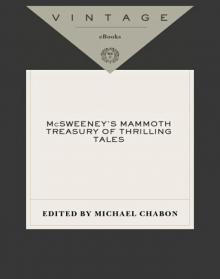 McSweeney's Mammoth Treasury of Thrilling Tales
McSweeney's Mammoth Treasury of Thrilling Tales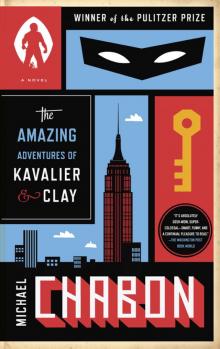 The Amazing Adventures of Kavalier & Clay
The Amazing Adventures of Kavalier & Clay The Yiddish Policemen's Union
The Yiddish Policemen's Union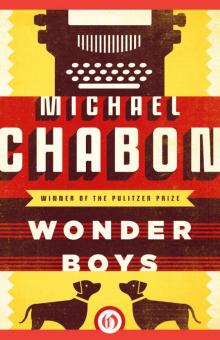 Wonder Boys
Wonder Boys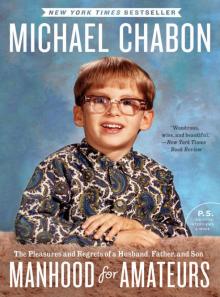 Manhood for Amateurs
Manhood for Amateurs Kingdom of Olives and Ash: Writers Confront the Occupation
Kingdom of Olives and Ash: Writers Confront the Occupation Gentlemen of the Road: A Tale of Adventure
Gentlemen of the Road: A Tale of Adventure A Model World and Other Stories
A Model World and Other Stories Pops: Fatherhood in Pieces
Pops: Fatherhood in Pieces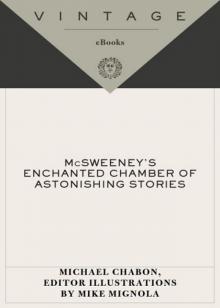 McSweeney's Enchanted Chamber of Astonishing Stories
McSweeney's Enchanted Chamber of Astonishing Stories Summerland
Summerland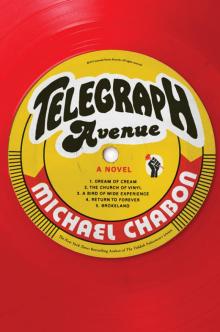 Telegraph Avenue
Telegraph Avenue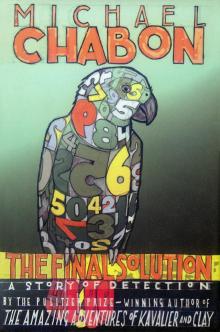 The Final Solution
The Final Solution The Mysteries of Pittsburgh
The Mysteries of Pittsburgh Werewolves in Their Youth
Werewolves in Their Youth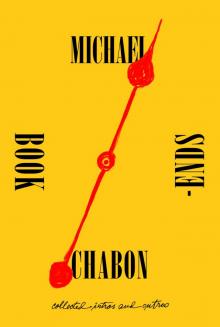 Bookends
Bookends Fight of the Century
Fight of the Century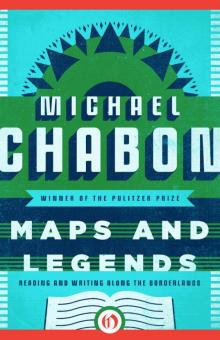 Maps and Legends
Maps and Legends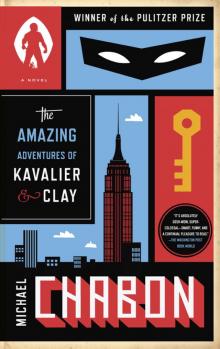 The Amazing Adventures of Kavalier & Clay (with bonus content)
The Amazing Adventures of Kavalier & Clay (with bonus content) Kingdom of Olives and Ash
Kingdom of Olives and Ash Pops
Pops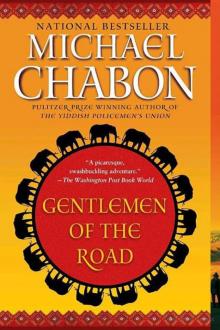 Gentlemen of the Road
Gentlemen of the Road The Final Solution: A Story of Detection
The Final Solution: A Story of Detection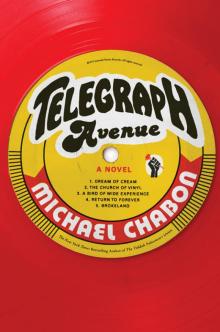 Telegraph Avenue: A Novel
Telegraph Avenue: A Novel